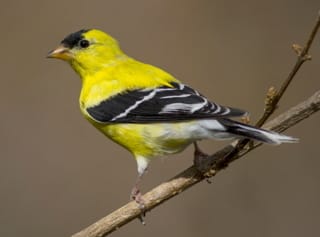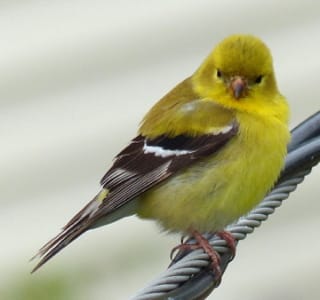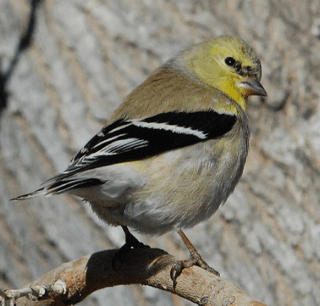Initially this guide displays common birds of all types that are flying right now in our area. Use the selectors below to view rare birds, view birds flying any time, restrict the output to a certain shape of bird, or search by name.
New Mexico is on the western edge of the Central Flyway which is one of the major migration pathways between north and south for birds traveling between breeding and wintering grounds along the Rocky Mountains. This has resulted in the state having an incredible diversity of birds with over 550 different species reported. A little more than half of this number are sighted annually on the Pajarito Plateau. Some of these birds are full-time residents, some migrate here for a few weeks or months, and other are only seen briefly as they pass through the region.
This guide features many of the birds known to frequent Los Alamos county by when they are likely to be seen in the area. You can get additional information on local birds by joining PEEC Birders or going to the eBird website. eBird also includes lists of rare bird sightings and birding hot spots.
Bird References
Birdweb
Cornell Lab of Ornithology
eBird
eNature
Institute for Bird Populations
National Audubon Society
New Mexico Ornithology Society
What Bird
xeno-canto
Subject Area Experts (all guides)
Steve Cary (butterflies)
Beth Cortright (insects)
Terry Foxx (invasive plants)
Leslie Hansen (mammals)
Richard Hansen (fish, mammals)
Dorothy Hoard (butterflies, trees)
Chick Keller (flowers, herbarium)
Shari Kelley (geology)
Kirt Kempter (geology)
Garth Tietjen (reptiles)
David Yeamans (birds)
Web Development and Content Management
Pat Bacha
Jennifer Macke
Graham Mark
Akkana Peck
Contact
Please contact us for local nature questions and sightings. We welcome comments, corrections, and additions to our guides.
For more information about local nature, please visit our Nature Blog or subscribe to PEEC This Week.
Make Selection
 Photo: breeding male by Mouser Williams  Photo: breeding female by molanic  Photo: nonbreeding adult by Jerry Oldenettel |  American Goldfinch, Black-winged Yellow BirdAMGO (Carduelis tristis, Spinus tristis)Family: Fringillidae (Finches) Size: 4.5 - 5 in (11 - 13 cm) Flies: Jan 01 - Dec 31 Morphology: breeding males are bright yellow with black forehead, black wings with white markings, and white rump; breeding females are dull yellow beneath and olive above; non breeding birds of both sexes are drab brown overall with black wings and dark beak Status: native; uncommon Food source: primarily small seeds but will feed on some insects in summer Habitat: brushy thickets, weedy grasslands The American Goldfinch can be seen year-round in the area. This is in contrast to the Lesser Goldfinch which is only a summer visitor. The American Goldfinch actively forages in weeds and shrubs and will climb up into plants such as thistle to reach the seeds. They can be seen at feeders. Nesting occurs in July and August. The cup-like nest is very compact, usually located high above the ground on a horizontal or upright fork of a tree. The young hatch about two weeks after the eggs are laid. Both parents feed the young until they leave the nest at about 11 to 17 days old. Info Photos Distribution Frequency |
